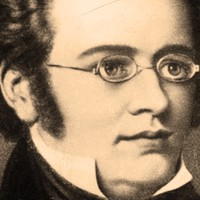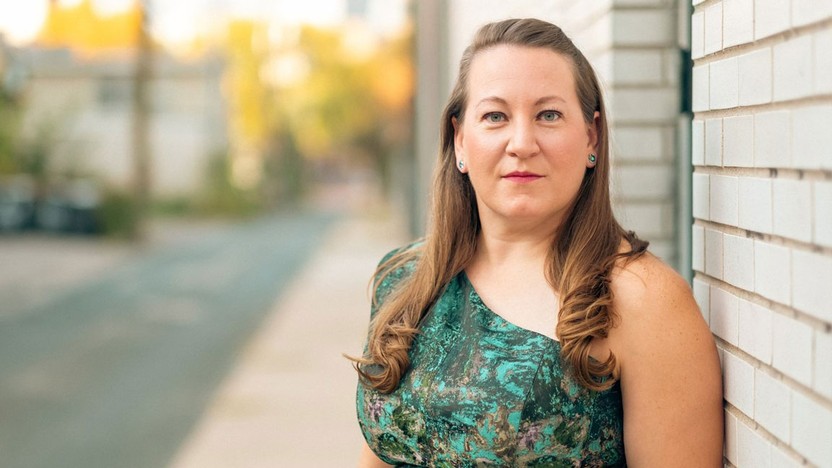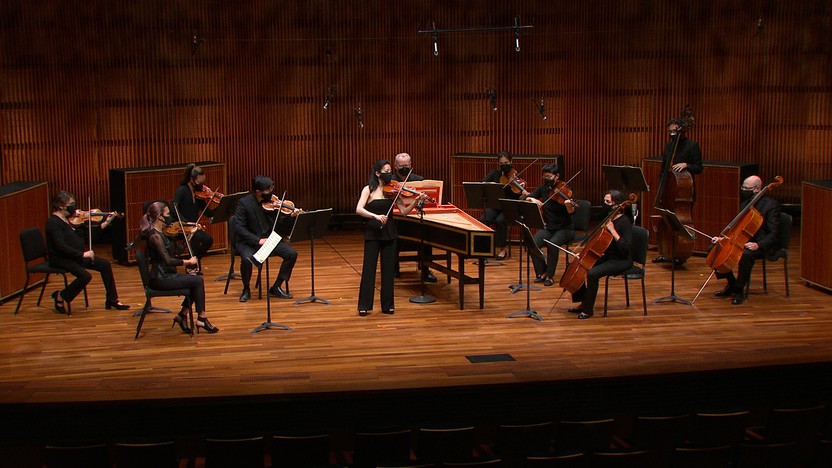Details

Franz Schubert
Rondo in A for Violin and Strings (14 min)
After a childhood spent singing in the court choir and playing string quartets with his family, Franz Schubert decided around the age of 12 or 13 to try composing. He planned to take after his father and brothers and become a schoolteacher, and at 17 he began working as a teaching assistant, although by then his side pursuit had grown to the point that he was taking composition lessons twice a week.
Schubert’s accomplishments in the next two years must rank as the greatest growth spurt in musical history. He composed some 300 songs (half of his lifetime total), plus four symphonies, three masses, five musical dramas, three string quartets, three violin sonatas and dozens of other works, all while working full-time, and before the Viennese public had seen or heard a single note of his music.
Schubert harbored grand ambitions to write symphonies and operas, but one large genre he never approached was the concerto. That was still the age of the virtuoso composer-performer, and although he was a sensitive accompanist at the piano and a competent violinist, he didn’t necessarily have the facility on any instrument to pull off a dazzling showpiece. His most significant piece for an instrumental soloist was this Rondo in A Major (D. 438) for violin and string quartet that he composed in 1816, possibly for his brother Ferdinand to perform at the orphanage where he taught.
One source of inspiration must have been the violin concertos that Mozart wrote for himself in his own late teens — in fact, the rising arpeggio that begins Schubert’s slow introduction mimics an identical gesture in Wolfgang Amadeus Mozart’s Fifth Violin Concerto. The violin’s bright and fluid passagework in the fast body of the Rondo points to Schubert’s underutilized knack for instrumental showmanship, while lyrical episodes celebrate his irrepressible tunefulness.
Aaron Grad ©2024

Ottorino Respighi
Il Tramonto (Sunset) (16 min)
Eunice Kim, violin
Daria Tedeschi Adams, violin
Daniel Orsen, viola
Sarah Lewis, cello
Nina Tso-Ning Fan, creative lead
Ottorino Resphigi, a native of Bologna, Italy, spent two formative years in Russia, where he took lessons from master orchestrator Nikolai Rimsky-Korsakov, followed by time in Berlin studying with Max Bruch. After taking a teaching job in Rome, Respighi honored his adopted home city and assured his place in the permanent canon of orchestral music with Fountains of Rome and Pines of Rome, among other gems.
One of Respighi’s first works from his time in Rome was a setting of The Sunset by the English Romantic poet Percy Bysshe Shelley, translated into Italian as Il Tramonto. The dizzying emotions of this poem, with its heart-wrenching tale of young love cut short by a sudden death, pushed Respighi to wring maximum contrast and force out of the vocal line and accompanying strings, tracing an arc from the fortissimo blast at the start to the fading lament at the end.
Aaron Grad ©2024

Franz Schubert arr. Max Reger
Lieder for Mezzo Soprano and Orchestra (arr. by Reger) (12 min)
This set of lieder, arranged for voice and orchestra by the German composer Max Reger, demonstrates the stunning craftsmanship and rich emotions that Franz Schubert cultivated in a deeply personal genre. Even before he contracted syphilis around the time of his 26th birthday — an infection that would kill him in less than six years — his songs were filled with grave thoughts of mortality, as heard in this harrowing setting of “Erlkönig” by Johann Wolfgang von Goethe, with the singer representing all the characters as a child’s father tries to outrace the supernatural being who ultimately takes the boy’s life. It was just one of about 150 songs Schubert wrote in 1815, when he was 18.
For his 1817 song “Memnon,” Schubert used a text written by his friend Johann Baptist Mayrhofer, which references a legend from Ancient Egypt about a massive statue of a seated Pharoah that was reported to emit a haunting “song” each day at dawn. Schubert’s setting explores the inner life of that colossus, whose song is imagined to be an aching cry of love to the “goddess of the morning.”
Schubert first wrote “Im Abendrot” in 1825, followed by a second and more well-known version in 1827. There were very few songs on religious subjects among the 600-plus lieder that Schubert composed in his life, but this one, which uses the vision of a sunset as an invitation to spiritual faith, shows the depth of feeling he could achieve when working in this hymn-like mode.
Aaron Grad ©2024

Franz Schubert
Symphony No. 5 (26 min)
The disconnect between Franz Schubert’s talent and his public recognition in his lifetime is hard to reconcile. This was a composer who produced hundreds of first-rate songs as a teenager, not to mention symphonies and chamber music, before even a note of his music had appeared in performance or in print. His songs gained a bit of traction in his lifetime, but his many attempts to break into opera were disastrous. As for his symphonies, not a single one reached the public before he died. As one publisher wrote to Schubert, in rejecting his manuscripts, ‘The public does not yet sufficiently and generally understand the peculiar, often ingenious, but perhaps now and then somewhat curious procedures of your mind’s creations.”
As a case in point, the Symphony No. 5 in B-flat Major that Schubert completed when he was 19 only had its first performance in 1841, 13 years after his death. Of all of Schubert’s symphonies, this is the only one that omits clarinets, trumpets and timpani from the orchestration, essentially turning back the clock to the symphonic customs of the 1780s. Schubert’s crisp musical material matches the economical scoring, with a first theme built out of a two-measure cell, and a second theme that incorporates the same distinctive rhythm from the earlier motive.
The slow movement becomes more expansive in its melodies, and a contrasting section that moves to a surprising key has Schubert’s unmistakable imprint, with singing themes set over pulsing accompaniments as found in many of his songs. The Menuetto is quick and boisterous enough to qualify as a scherzo, Ludwig van Beethoven’s rowdy answer to Franz Joseph Haydn’s more polite minuets, while the key of G-minor recalls Wolfgang Amadeus Mozart’s stormy Symphony No. 40. The finale closes the symphony on a lively note, honoring Schubert’s debt to the masters of the previous generation.
Franz Schubert ©2024
About This Program
Join us for a special program curated by SPCO violinist Nina Tso-Ning Fan, which features a thrilling collaboration with Twin Cities-based mezzo-soprano Clara Osowski, a local award-winning artist revered world-wide for singing "from inside the music with unaffected purity and sincerity" (UK Telegraph). As the featured soloist on Franz Schubert’s dazzling Rondo in A, Fan will open this concert that contrasts light and dark with several works by Schubert and Ottorino Respighi’s Il tramonto (The Sunset) for Voice and String Quartet. The program closes with a youthful Symphony by Schubert.


